Detailed introduction of Belarusian State University of Informatics and Radioelectronics:
Introduction
Belarusian State University of Informatics and Radioelectronics (BSUIR) is the top institution of higher learning in the fields of information technology, radio engineering and electronic engineering in Belarus, and is also a first-class comprehensive university in this field in the CIS countries.
History and establishment time
The school was established on September 1, 1964 on the basis of the Minsk Radio Engineering Institute. At that time, it was aimed at meeting Belarus's demand for high-quality professionals in the radio electronics industry. Initially, it had two departments, radio engineering and automation and computer, and enrolled 2,500 full-time and evening students.
In 1993, it was officially renamed the Belarusian State University of Informatics and Radioelectronics.
School Strength
Faculty: It has 725 academic staff, including 2 academicians of the National Academy of Sciences of Belarus, 2 corresponding members, 301 professors and 317 doctors of science.
Student size: There are about 17,000 students, including 15,196 undergraduates, 875 Graduate students and 252 doctoral students.
Teaching resources: The school has 10 departments, 38 teaching and research offices, 27 corporate academic department branches, 176 education and research laboratories, 33 joint education, research and production laboratories, and 8 certified education centers established in cooperation with world-leading companies such as Microsoft, IBM, and Cisco.
Institutional nature
The Belarusian State University of Informatics and Radioelectronics is a public higher education institution.
Educational philosophy
Aims to provide educational programs of interest to students, cultivate students' professional capabilities in the fields of computer science, radio electronics and telecommunications, ensure that graduates are competitive and in demand in the labor market, focus on combining theoretical knowledge with practice, and provide students with practical opportunities and scientific research project experience through cooperation with enterprises and scientific research institutions to cultivate high-quality talents with innovative spirit and practical ability.
Key laboratories and disciplines
Key laboratories: The school has 42 scientific laboratories and centers, and has jointly created 45 with industrial enterprises and IT companies. Education and scientific laboratories provide a good platform for scientific research innovation and talent training.
Key disciplines: computer engineering, software engineering and technology, network security and information security, electronic economy and marketing, artificial intelligence, radio electronics and radio informatics, information and communication technology, nanotechnology and nanoengineering, big data, Internet of Things, cloud computing, medical electronics, game design, etc.
Department settings
School of Computer Systems and Networks: Focuses on teaching and research in the fields of computer network architecture, system design and development, and cultivates students' professional skills in network engineering, distributed systems, data communications, etc.
School of Information Technology and Control: Covers the application of information technology in automation control, industrial production, intelligent systems, etc. Students will learn control theory, automation technology, artificial intelligence control and other knowledge to achieve effective control and optimization of complex systems.
School of Telecommunications: Mainly involves professional directions such as communication engineering, wireless communication technology, and communication networks, and cultivates professionals who can engage in communication system design, development, operation and maintenance to meet the demand for talents in the modern communication industry.
School of Computer-Aided Design: Focuses on computer-aided design and manufacturing, graphics, virtual reality , etc., so that students can use computer software for product design, modeling, simulation and optimization, and provide technical support for manufacturing, architectural design and other industries.
School of Radio Engineering and Electronics: Research radio technology, electronic circuits, microwave technology, antenna design and other contents, cultivate students' professional qualities in radio communication, radar system, electronic countermeasures and other fields, and provide talents for national defense and electronic information industries.
School of Engineering and Economics: Combine engineering technology with economic management. Students should not only learn engineering professional knowledge, but also master the basic principles and methods of economics and management, so as to cultivate compound talents who are both technically and management-savvy, and can perform project management, cost control and market operation in engineering enterprises.
School of Continuous and Distance Training: Committed to providing flexible educational opportunities for in-service personnel and distance learners, through online education, night school, correspondence and other teaching methods, so that students can continue their studies without affecting their work and improve their professional level.
School of Preparatory and Career Guidance: Provide preparatory education for students preparing to enter university, help them improve their language level, learn basic subject knowledge, and prepare for smooth entry into undergraduate studies. At the same time, the college also provides students with career guidance and consulting services to help them understand the employment prospects and development directions of different majors so as to make more appropriate career choices.
Off-campus training college: mainly provides various training courses and further study programs for off-campus students and social personnel to meet the needs of different groups for knowledge and skills improvement. The course content covers computer technology, electronic engineering, information technology and other fields.
Military Academy: Cultivate professional information technology and radio electronics talents for the military field. The teaching content is closely integrated with military needs, including knowledge and skills in military communications, electronic countermeasures, military information systems, etc., to provide strong support for national defense construction.
Ranking
In the 2025 QS World University Rankings, it is ranked 1201-1400.
Ranked 129 in the 2022 QS Emerging Europe and Central Asia Rankings.
Expenses
The cost of studying abroad is relatively low, about 20,000 yuan a year, and the specific tuition fees vary depending on the major.
Campus
Campus facilities: The school is located in the center of Minsk and has 6 teaching buildings equipped with modern laboratories and technical facilities. The school has a dormitory that can accommodate 2,100 people, as well as sports facilities and a famous brass band, providing students with a diverse life.
Campus life: The school focuses on the all-round development of students. In addition to rich academic activities, it also provides students with various club activities, cultural exchange activities and sports events to cultivate students' comprehensive qualities and team spirit. At the same time, the school also frequently holds various national and international forums, conferences and other activities to provide students with opportunities to communicate with domestic and foreign experts and scholars and broaden their horizons.
-

Vitebsk State University named after P. M. Masherov
-

Gomel State Medical University
-
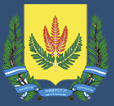
Mogilev State A. Kuleshov University
-
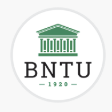
Belarussian National Technical University
-

Belarusian State University of Informatics and Radioelectronics
-

Gomel State University
-
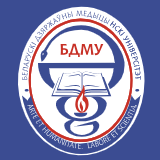
Belarusian State Medical University
-
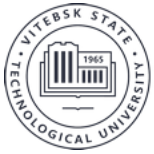
Vitebsk State Technological University
-

Belarusian State University
-
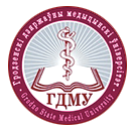
Grodno State Medical University
-

Mesoamerican University
-

Istmo University
-

Mariano Galvez University of Guatemala
-

Regional University of Guatemala
-

Galileo University
-

Francisco Marroquín University
-

Rafael Landívar University
-

University of the Valley of Guatemala
-

University of San Carlos of Guatemala
-

Technological Institute of Tlaxcala Plateau
-

Golfo University
-

Technological University of South Sonora
-

Technological University of Huejotzingo
-

Tizimín Institute of Technology
-

Chilpancingo Institute of Technology
